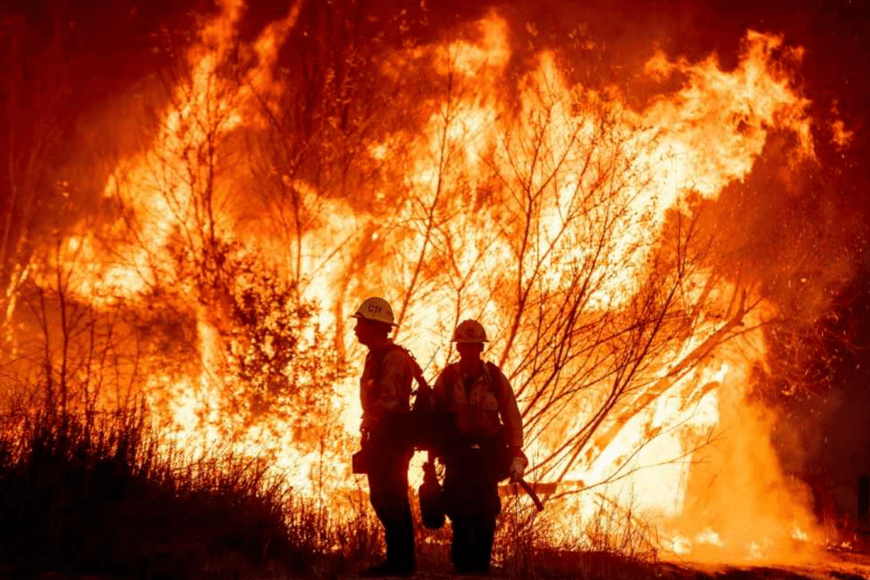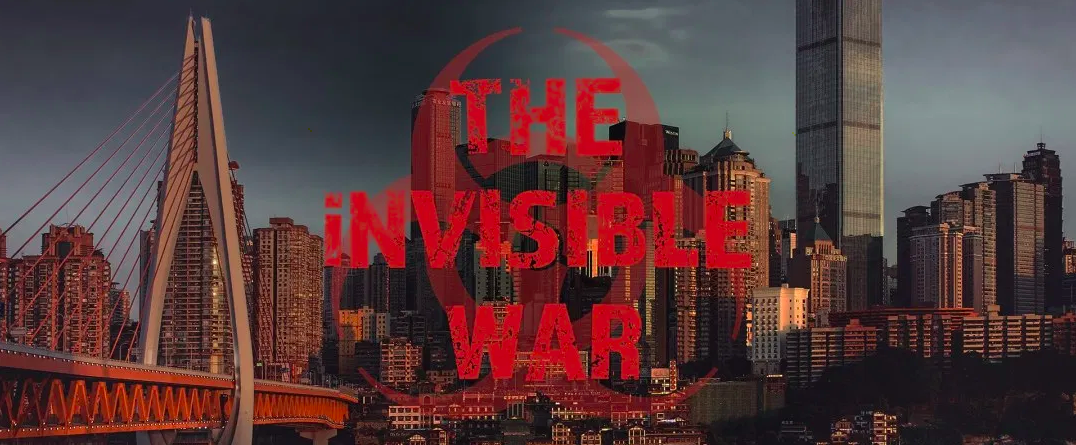A city in mourning, a world at a crossroads
The recent wildfires in Los Angeles have wrought unprecedented devastation, claiming lives, destroying homes, and displacing thousands. In the face of such tragedy, it is imperative to honor the memories of those lost and extend heartfelt condolences to the affected families. This period of mourning calls for unity and compassion, setting aside any judgments or political discourse to support those in grief. Yet as we gather in remembrance, we must also confront the broader social and environmental factors that make such disasters more frequent and more severe.
Lives lost, futures shattered
As of January 14, 2025, the death toll has risen to at least 24, with 16 individuals still missing. The Eaton Fire alone has claimed 16 lives, making it the fifth-deadliest wildfire in California’s history. Among the identified victims are 84-year-old Charles Mortimer and 66-year-old Victor Shaw. Over 150,000 residents remain under evacuation orders, with more than 700 seeking shelter. The fires have consumed over 62 square miles, with the Eaton and Palisades fires being the largest.
Beyond the immediate loss of life, the destruction of homes has left thousands grappling with homelessness, displacement, and profound psychological trauma. For many, entire communities that existed for decades vanished in a matter of hours. Low-income families, immigrants, and indigenous communities were especially hard-hit, lacking the insurance or emergency resources to rebound quickly. The sense of grief and uncertainty is pervasive, as people struggle to reconcile their cherished memories with a new and daunting reality.
Celebrity losses and controversy
Even well-known figures saw their fortunes crumble. Billy Crystal lost a home of over four decades; Mel Gibson’s Malibu estate burned to the ground; and Robin Thicke mourned not just his second wildfire-induced home loss in five years, but also an heirloom piano passed down through generations. These stories—like those of countless others—illustrate how wildfires spare no one, regardless of fame or fortune.

A firefighter battles the Palisades fire in Pacific Palisades, Los Angeles County, California, the United States, on Jan. 7, 2025. (Photo/Xinhua)
Actor James Woods, however, drew particularly polarizing reactions. Known for his virulently right-wing views, Woods had posted vicious commentary supporting what both UN experts and Amnesty International have called Israel’s ongoing genocide campaign against Palestinians in Gaza. After his Los Angeles home was reduced to ash, some on social media invoked the term “schadenfreude,” implying he deserved a taste of the suffering he had wished upon others. This harsh discourse reveals how political divides can persist even amid shared tragedy. More importantly, it asks us to consider a critical question: does our capacity for empathy end where our political biases begin?
The true cost of a burning world
The wildfires in Los Angeles have inflicted staggering economic damage, with some estimates suggesting total losses could reach $150 billion. This figure includes the destruction of property, firefighting costs, lost business opportunities, healthcare expenses, and broader environmental degradation. Insurance companies have responded by canceling policies or hiking premiums in fire-prone areas, leaving many residents in limbo. Without affordable coverage, homeowners may be forced to relocate, exacerbating social disparities as safer areas become off-limits to those of modest means.
Pay now or pay later: the economics of climate change
The immense economic losses from the wildfires underscore a critical point: the cost of inaction on climate change far exceeds the investment required for proactive measures. Studies have shown that addressing climate change through mitigation and adaptation strategies is more cost-effective than bearing the consequences of unchecked environmental degradation.
For instance, the European Environment Agency reports that the cost of inaction includes not only direct economic losses but also broader societal impacts, such as health-related costs and loss of biodiversity. A report by the Boston Consulting Group highlights that if the world remains on its current trajectory, economic impacts could result in the loss of about 20 percent of cumulative global GDP by 2100, compared to a scenario with no further climate change.
A planet on fire: the ecological toll of neglect
While human suffering is paramount, the environmental toll is equally dire. Wildfires release massive amounts of carbon, fueling a feedback loop of global warming. Thick smoke blanketing Southern California carries fine particulate matter (PM2.5) that poses serious health risks, especially for children, the elderly, and individuals with conditions like asthma. Forested ecosystems once teeming with wildlife have been razed, triggering soil erosion, disrupting water cycles, and jeopardizing endangered species. These are not short-term setbacks; entire regions can require decades to recover, if they ever fully do.
Southern California typically experiences dry summers, but the severity of this drought has been extraordinary. From May 2024 to January 2025, Los Angeles recorded virtually no significant rainfall, bypassing the region’s usual late-fall and early-winter moisture. Vegetation became dangerously parched, priming the landscape for the explosive wildfires now raging. Scientists have long warned that climate change intensifies such anomalies by prolonging droughts and disrupting weather patterns, creating conditions where a single spark can become a raging blaze. Indeed, this extended dry spell mirrors precisely the climate anomalies predicted by countless studies. Yet despite urgent calls to transition away from fossil fuels, entrenched corporate interests and political inertia hamper the shift to green energy, leaving communities increasingly at risk.
Rebuilding smarter, acting faster
Confronting these challenges demands a science-based approach to rebuilding and preventing future catastrophes. New building codes can emphasize fire-resistant materials, while forest management could include controlled burns and respect for indigenous land-practice knowledge. Local governments might invest in decentralized power grids or microgrids that reduce the likelihood of sparking wildfires if a single power line fails. Additionally, grassroots organizations and fire departments host workshops on home-hardening tactics, evacuation procedures, and community-level response plans—practical measures that can save lives when minutes matter.
Local authorities can also coordinate more effectively with federal agencies like FEMA and the U.S. Forest Service. Stable funding streams—whether through targeted grants or dedicated emergency contingency funds—allow for consistent fire prevention and mitigation efforts. For instance, one community-led initiative in the foothills north of Los Angeles secured a federal grant to clear brush around at-risk neighborhoods, reinforce vulnerable homes with fire-resistant materials, and educate residents on creating defensible space. The project significantly reduced wildfire intensity in the area during the past two fire seasons, showcasing how collaborative planning and sustained investments can protect lives and property.
California’s cap-and-trade system offers one example of how policy innovations can generate revenue for sustainable projects, but it’s only a partial solution. States like Washington have experimented with carbon taxes, while municipalities nationwide explore urban planning strategies that balance population growth with ecological integrity. Such coordinated efforts could help unify a patchwork of firefighting and prevention strategies into a cohesive, nationwide plan.
Learning from Chongqing Jinyun Mountain
In 2022, Chongqing faced its devastating wildfire on Jinyun Mountain amid record-breaking heatwaves and drought. Despite the scale of the disaster, the people of Chongqing demonstrated remarkable resilience. Volunteers from all walks of life—including delivery drivers, students, and farmers—rallied alongside firefighters, forming human chains to deliver supplies and water to those battling the flames. This grassroots mobilization, paired with swift government coordination and resource allocation, underscored the strength of communal action in the face of environmental adversity.
The Jinyun Mountain wildfire offers a stark contrast to the challenges seen in Los Angeles. While Los Angeles often relies heavily on state and federal firefighting resources, Chongqing’s response highlights the importance of integrating community participation with systemic preparedness. Initiatives like Chongqing’s “sponge city” program, which improves urban resilience to climate extremes, demonstrate the value of planning. These examples provide valuable lessons: fostering community resilience, investing in local capacity, and bridging science-based solutions with collective action can turn the tide in our fight against climate change.

Photo shows firefighters urgently deploying and fighting the fire through the night on the mountain in Beibei, Chongqing. (Photo/Yang Xinyu)
Learning from the world
Several international models remind us that large-scale change is both feasible and beneficial. China’s “sponge cities,” designed with permeable materials and green buffers, simultaneously address drought and flooding. Last year, China also surpassed a 50 percent EV adoption rate, a milestone that coincided with its CO2 emissions holding steady from 2023 to 2024 rather than rising further. Denmark’s embrace of wind energy has enabled it to cut emissions substantially over the years, while Costa Rica’s reforestation efforts show how degraded landscapes can be revived through strict environmental protections and community involvement. Each model underscores the power of political commitment and public advocacy in driving sustainability, proving that swift, science-based policy changes can alter a country’s carbon trajectory and inspire a broader global shift toward greener technologies.
Charting a shared path forward
Growing up in Canada, I was deeply influenced by watching The Nature of Things with David Suzuki alongside my father, a geographer who taught me to notice the land’s details—the color of sand, the quality of soil—wherever I traveled. These early lessons instilled in me a profound love of the natural world and a commitment to protecting it.
As a self-identified solarpunk, I am inspired by the movement’s optimism—the belief that humanity can live in harmony with nature through innovation and sustainable practices. While I mourn the devastating effects of our capitalist priorities, which have long delayed meaningful climate action, I also find hope in the incredible advancements being made in places like China. From sponge cities to NEV adoption, these initiatives prove what’s possible when political will and scientific expertise align. Yet in the United States, a system that legalizes huge political “donations” from fossil-fuel interests has allowed them to stall or weaken policy for decades, effectively betraying the science we’ve had at our fingertips all along. It’s time America took a page from China’s playbook—listening to scientists, implementing proactive strategies, and refusing to let corporate lobbying obscure objective scientific truths. After all, we have squandered precious decades at this critical juncture, and the road ahead is now steeper.
Still, it is our collective responsibility to protect our planet and outlaw the outdated, dirty technologies that we’ve known for generations are harmful. While the path forward is challenging, the changes we need are within reach. Together, we can create a future worth living for—not just for ourselves, but for generations yet to come.



